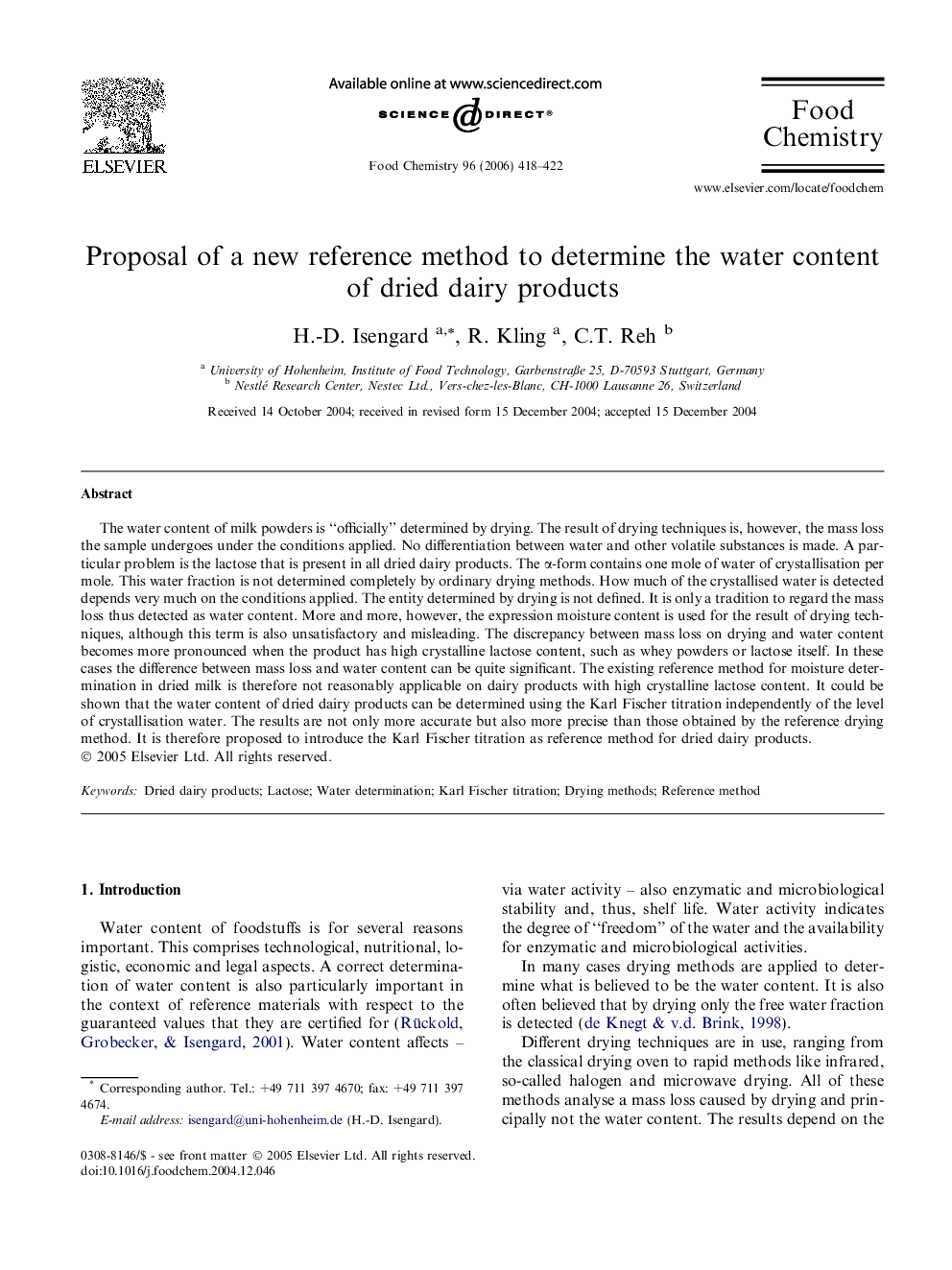| Article ID | Journal | Published Year | Pages | File Type |
|---|---|---|---|---|
| 1191225 | Food Chemistry | 2006 | 5 Pages |
The water content of milk powders is “officially” determined by drying. The result of drying techniques is, however, the mass loss the sample undergoes under the conditions applied. No differentiation between water and other volatile substances is made. A particular problem is the lactose that is present in all dried dairy products. The α-form contains one mole of water of crystallisation per mole. This water fraction is not determined completely by ordinary drying methods. How much of the crystallised water is detected depends very much on the conditions applied. The entity determined by drying is not defined. It is only a tradition to regard the mass loss thus detected as water content. More and more, however, the expression moisture content is used for the result of drying techniques, although this term is also unsatisfactory and misleading. The discrepancy between mass loss on drying and water content becomes more pronounced when the product has high crystalline lactose content, such as whey powders or lactose itself. In these cases the difference between mass loss and water content can be quite significant. The existing reference method for moisture determination in dried milk is therefore not reasonably applicable on dairy products with high crystalline lactose content. It could be shown that the water content of dried dairy products can be determined using the Karl Fischer titration independently of the level of crystallisation water. The results are not only more accurate but also more precise than those obtained by the reference drying method. It is therefore proposed to introduce the Karl Fischer titration as reference method for dried dairy products.
